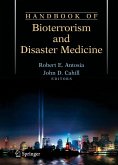In 2003, the President's budget for bioterrorism defense totalled more than $5 billion. Today, the nation's top academic scientists are scrambling to begin work to understand Bacillus anthracis and develop new vaccines and drugs. However, just five years ago, only the US Department of Defense (DOD) seemed concerned about these "exotic" agents. In 1997, the DOD spent approximately $137 million on biodefense to protect the deployed force, while academe, industry, local governments, and most of our federal leadership was oblivious to, and in some cases doubtful of, the seriousness of the threat. The National Institutes of Health (NIH) received the largest budget increase in the organization's history. Fortunately, during this time of national urgency, a sound base exists on which to build our defenses against this new threat. A relatively small cadre of dedicated scientists within the US Army Medical Research and Materiel Command (USAMRMC) laid this foundation over the past 20 years.
Hinweis: Dieser Artikel kann nur an eine deutsche Lieferadresse ausgeliefert werden.
Hinweis: Dieser Artikel kann nur an eine deutsche Lieferadresse ausgeliefert werden.
From the reviews:
"Acts of bioterrorism have not happened since the end of World War II except the distribution of anthrax spores in the US postal system in 2001 ... . This important book is dedicated and useful not only for governmental and public health workers but also for a broad group of readers up to practitioners who might come in contact with such events as the first ones." (Werner Köhler, International Journal of Medical Microbiology, Vol. 295, 2005)
"Acts of bioterrorism have not happened since the end of World War II except the distribution of anthrax spores in the US postal system in 2001 ... . This important book is dedicated and useful not only for governmental and public health workers but also for a broad group of readers up to practitioners who might come in contact with such events as the first ones." (Werner Köhler, International Journal of Medical Microbiology, Vol. 295, 2005)








